At Michigan State University, faculty and students are using theatre and dance to illuminate the effects of climate change through a project in partnership with Bullfrogs Ballet artists, educators, and students in North Macedonia.
The Ripple Effect project was funded in part by the U.S. Embassy, MSU Office of Research and Innovation’s Climate Justice and Environmental Ethics Award, and MSU College of Arts & Letters.
The project provided cross-cultural opportunities for students to collaborate with artists and climate experts to learn about environmental issues in the U.S. and North Macedonia, and then to develop original performance art illustrating those challenges and possible solutions.
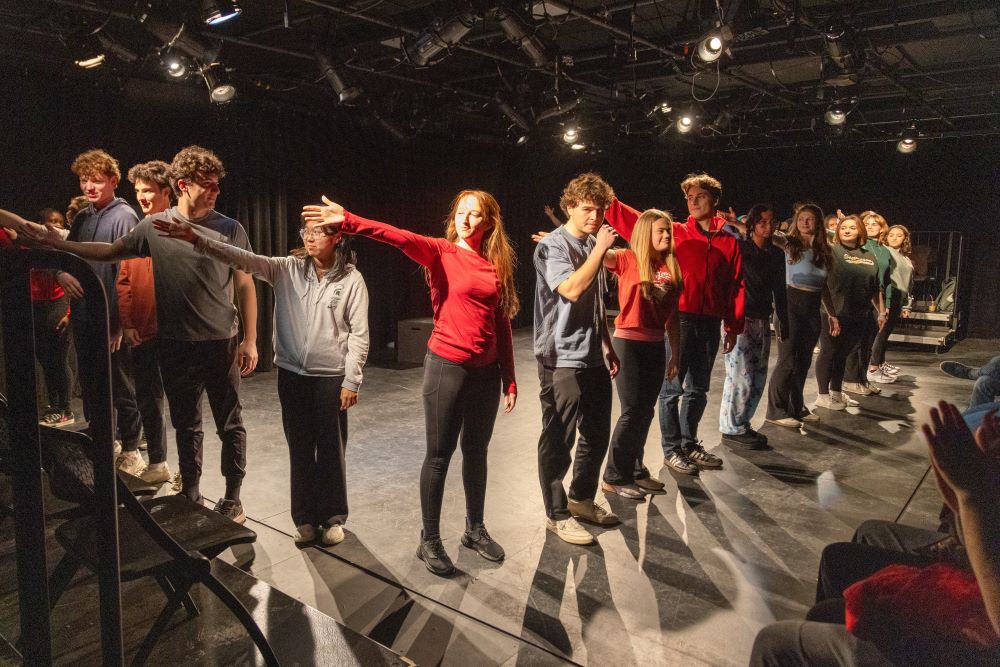
“The U.S. Embassy to North Macedonia put out a call looking for artistic engagement with social issues and specifically with the environment,” said Deric McNish, associate professor of theatre and Director of Undergraduate Research for the College of Arts & Letters. “They were looking for ways to create cross-cultural collaboration and connection, but also for ways for Americans to work with Macedonians on problems that are bigger than all of us.”
McNish with Theatre Professor Rob Roznowski, who had connections with Bullfrogs Ballet through a previous Fulbright fellowship, submitted the initial proposal to the U.S. Embassy with North Macedonian artists and educators Aleksandra Nikiforovski and Bojan Lazarov.
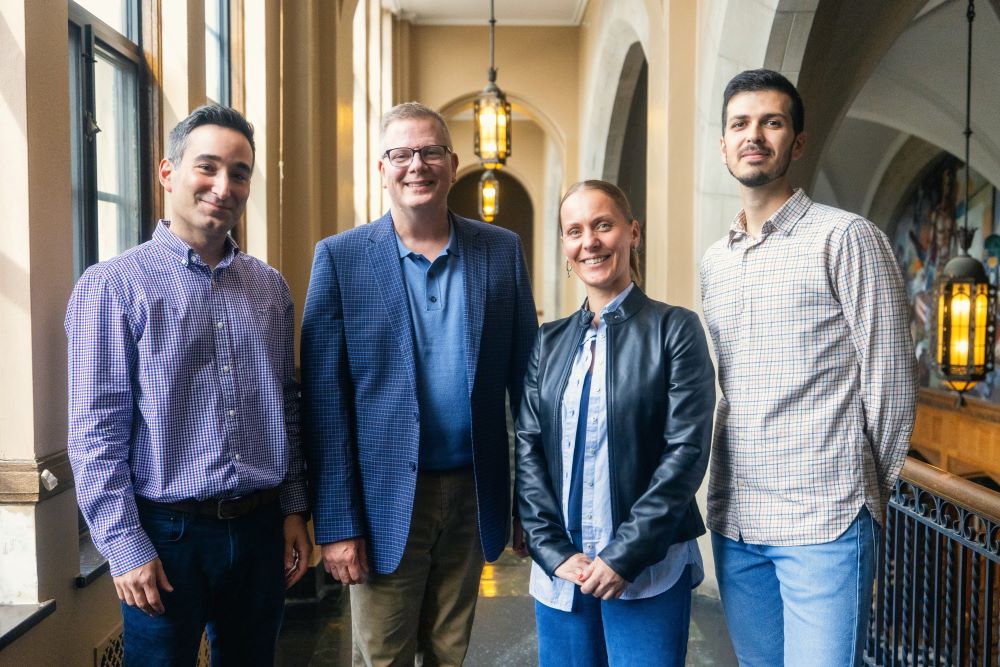
Dancer and choreographer Nikiforovski established Bullfrogs Production and Bullfrogs Ballet School in 2009 in Skopje, North Macedonia. The non-governmental organization (NGO) Bullfrogs Ballet was established in 2011 to support cultural growth endeavors for the wider public, especially local children and youth, making it an ideal fit for The Ripple Effect project.
“It is invaluable for us as teachers and professors to exchange our different ways of learning and to share different methods and experiences,” Nikiforovski said. “There can be benefits from international experiences only if both countries use all the positive experiences that we have learned and apply them in our countries.”
Also part of the project is Lazarov, an actor, performer, educator, and collaborator with Bullfrogs Ballet and other dance and theatre productions.
“In The Ripple Effect project, Bullfrog Ballet plays a pivotal role in bridging the worlds of dance and theatre. By combining dance techniques with the expressive potential of theatre and performance, the project enables students to explore innovative ways of storytelling,” he said. “The project not only promotes artistic growth but also uses performance as a tool for environmental education and advocacy.”
Creative Learning
At MSU, The Ripple Effect was part of a combined Theatre and Integrative Studies in the Arts and Humanities course called “Art in Action” that was taught by McNish and Roznowski. Around 30 students, most not majoring in Theatre, spent the semester learning about climate issues faced in Michigan and North Macedonia through online cross-cultural discussions, artist residencies, and scientific consultations.
“Climate justice is such an important issue for specifically Gen Z, and the students in those classes are the people that are going to be bearing the brunt of many of the environmental issues that if not addressed are going to cause major problems,” Roznowski said. “They’re looking at ways to use art, to use their voice.”
Amber Pearson, Associate Professor of Public Health and part of the MSU Water Alliance initiative, shared information with students about water issues and challenges communities face in Michigan. Pearson is a health geographer whose work relates to social justice, including the water crisis in Flint, Michigan. Students also learned about pollution problems from Gorjan Jovanovski, an eco-activist and software entrepreneur in North Macedonia.
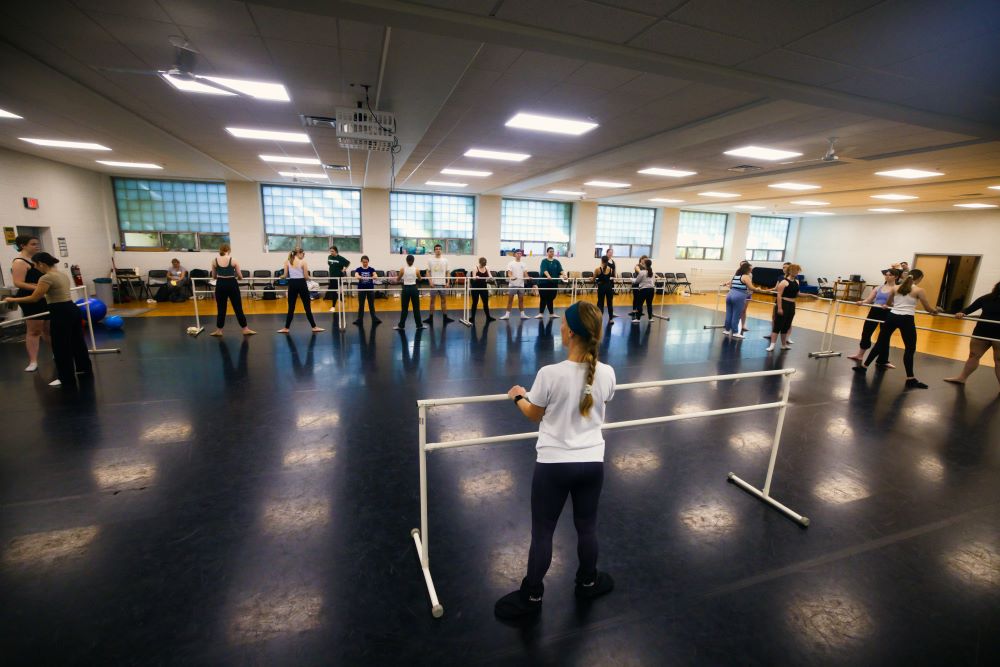
The MSU Theatre and IAH students created a performance piece over the course of the semester that distilled the information learned and conveyed the effects of climate change and pollution on air, water, and land in the two countries. Students performed their The Ripple Effect piece on campus Dec. 10.
As part of the creative process, Nikiforovski and Lazarov visited East Lansing in September 2024 to work with MSU students. With dance and physical theatre being inherently tactile, it helped to share the same physical space to show different dance techniques and develop choreography elements.
“In a creative setting, like theatre or dance, cross-cultural experiences can inspire new ideas and ways of expression,” Lazarov said. “You learn from each other’s stories, traditions, and styles, which can lead to something entirely fresh and unique. It’s not just about learning something new—it’s about building connections, finding common ground, and understanding the value of diversity.”
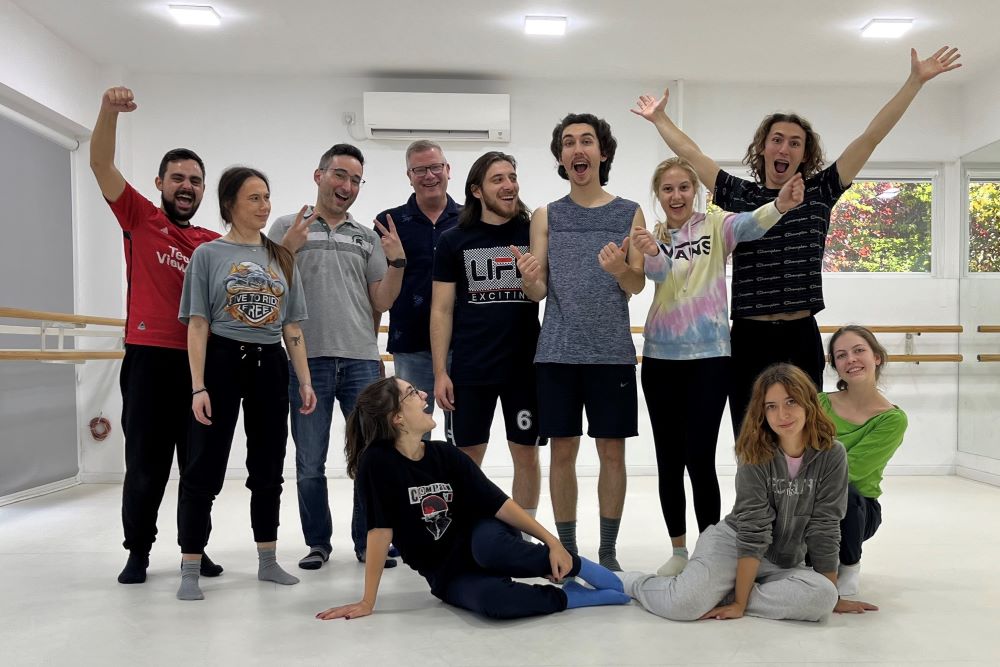
In turn, McNish and Roznowski traveled to Skopje in October 2024 to collaborate with Bullfrogs Ballet students on incorporating American theatre techniques and community engagement practices into their performance piece, which they debuted Nov. 4.
Being physically present in Michigan and North Macedonia enabled participants to directly connect with students in their local environments, engage with the communities affected by these environmental issues, and draw inspiration from the landscapes that are central to those narratives.
“Culture and art are a powerful tool for conveying a message in a different way than the commercial one,” Nikiforovski said. “Our goal is for a large audience to notice this project, enjoy it, see the quality and artistry, and then take the message and ask themselves if they can make personal changes towards a better environment today and for future generations.”
Art in Action
Over the last few months, students at MSU and Bullfrogs Ballet developed visual elements, dance, expressive movement, and monologues to highlight environmental challenges in the U.S. and North Macedonia.
For MSU students, the process used devised theatre practices that many weren’t familiar with, according to Stephanie Kroschel, a Theatre graduate student and Teaching Assistant in the “Art in Action” course.
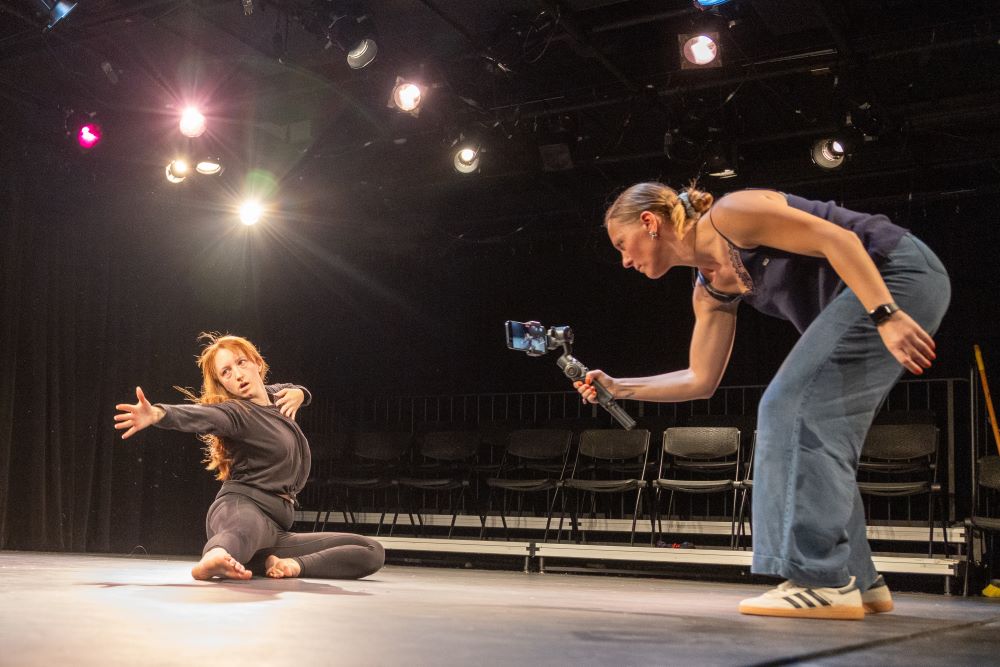
“Devised theater is unique in that you, as a group of artists, create your story. There’s no script. There’re no rules. You make it up to share the story you want to tell,” Kroschel said. “The concept here is what can art, what can performance do to help address environmental issues, and how can art be used in a way that brings people together to create for a purpose?”
Savannah Perez, a junior majoring in Theatre, said her favorite part was working with Nikiforovski and Lazarov and learning more about their experiences in North Macedonia.
“I love meeting people from all over the world and getting to see the ways in which they create art. I also would not consider myself a dancer, but they made me feel like I could be through their guidance and encouragement,” Perez said. “I hope that our performance gives people a greater understanding of the effects of climate change, and also about how we can blend art and science to create change in the world.”
That confidence, creative inspiration, and ability to have an impact are some of things students and faculty are taking away from The Ripple Effect.
“As an educator, I’ve learned a lot of strategies for helping students collaborate across ability and across interest level,” Kroschel said. “As someone who has intent to go into full-time higher education in the arts, this has been eye-opening to see what the arts can do at the college level and what opportunities I could create for future students.”
A Shared Future
The Ripple Effect project was set up to foster deep intercultural connections, artistic collaboration, and meaningful dialogue and outreach related to the critical climate and environmental issues facing our world today.
“Instead of just hearing about deforestation or water pollution, through theatre and dance, audiences can see and feel the impact more humanly,” Lazarov said. “They remind us that environmental justice is about real people, real lives, and the world we all share.”
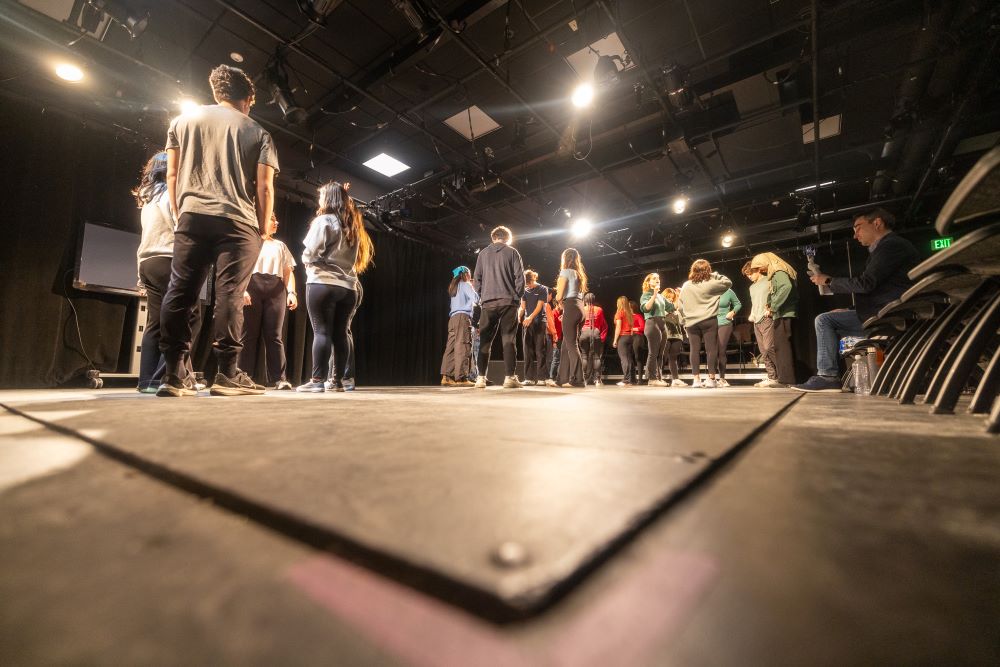
Additional international partnerships are being explored to expand The Ripple Effect. McNish and Roznowski have met with colleagues at the University of Patras in Greece and Saint Louis University in Spain.
“Developing the relationship with the Bullfrogs Ballet is a starting point,” Roznowski said. “We’re looking for other collaborators and other sources of support for this.”
There is also growing interest in creative climate outreach and sustainability projects across Michigan State University. The Arts MSU and recent MSU Water Alliance initiatives offer possible new ways to connect with The Ripple Effect project through interdisciplinary teaching, learning, and research opportunities.
“Part of our job in the Department of Theater is to expose students to other ways of making art, so this is a great opportunity,” McNish said. “We’re committed to making this a sustainable project. That’s why we developed this course so it will continue in the future.”
Art can be a catalyst for growth and change in our state, country, and world, and Michigan State is playing an active role in this shared future.
“Hopefully, the message that students are receiving is that everyone has an ownership of the world around them,” Kroschel said. “Everyone has a voice to make change in their communities and that theater can be one way to take that message into the world and to advocate for their community and to make a difference.”
This story originally appeared on the College of Arts and Letters website.